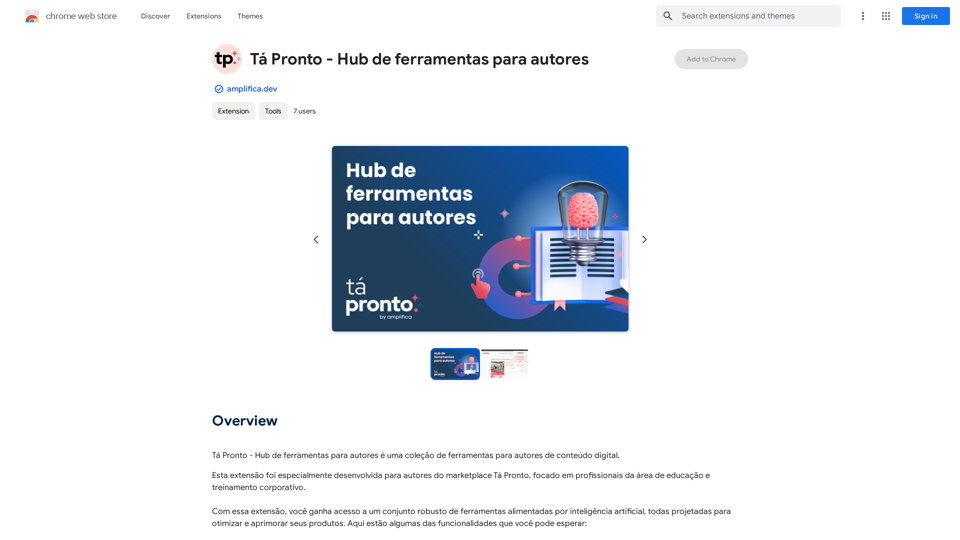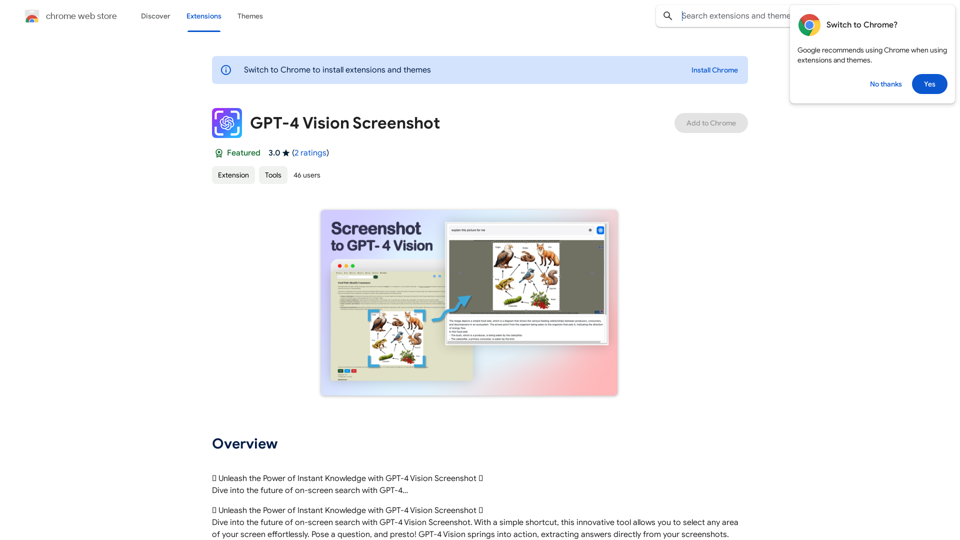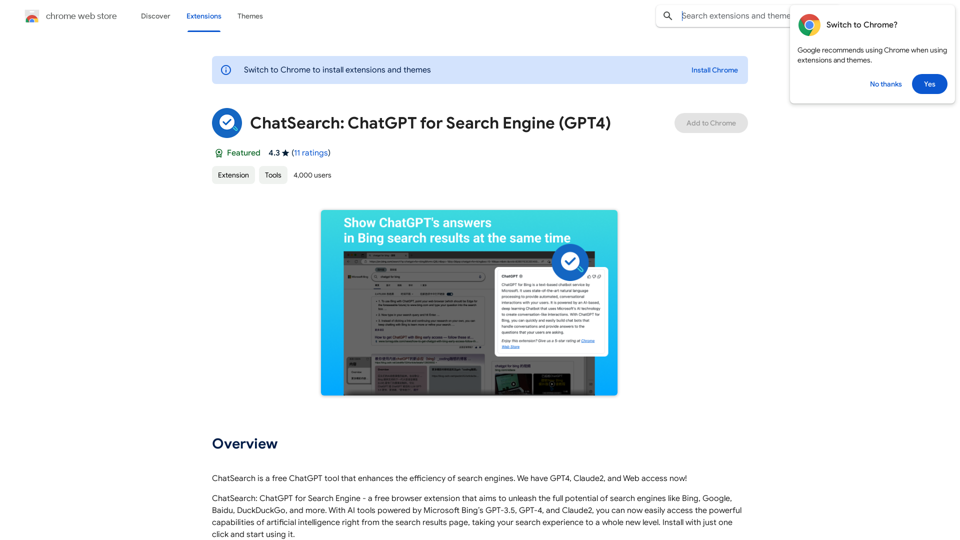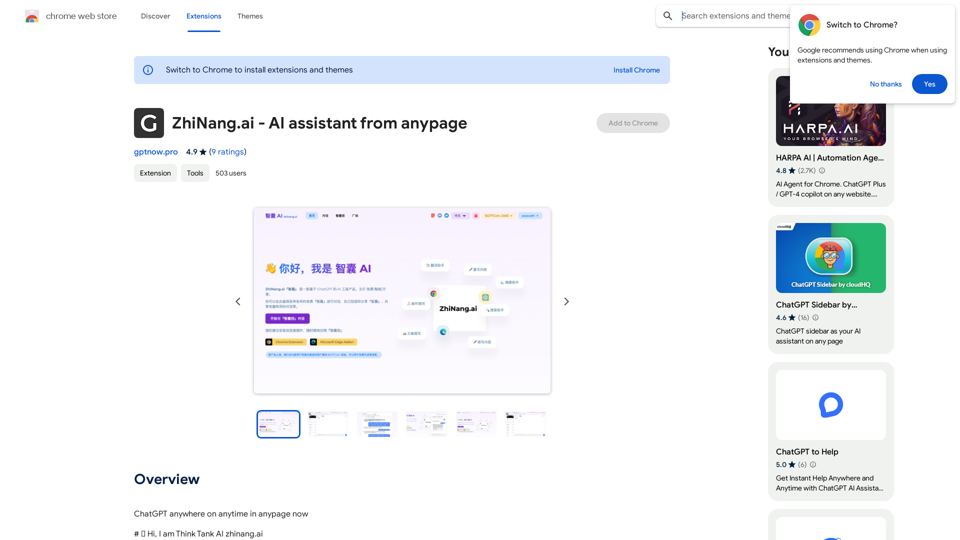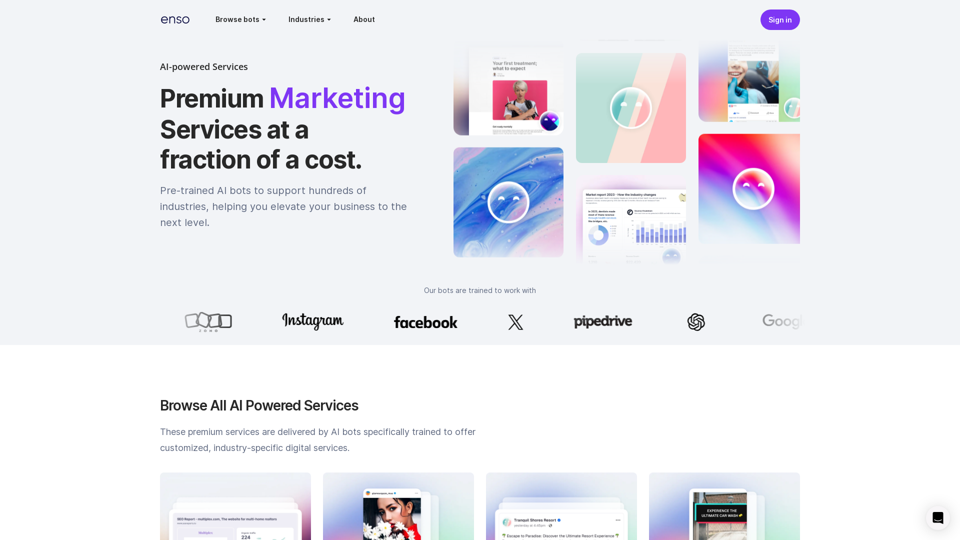Lunaは、ブラウザ内で直接ChatGPTの体験を向上させる人気のあるChrome拡張機能です。世界中で30,000人を超えるユーザーベースを持つLunaは、多くの人にとって時間を節約するツールであることが証明されています。この拡張機能は、ChatGPTの機能をブラウジング体験にシームレスに統合し、AI支援をこれまで以上にアクセスしやすくします。
Luna - Chrome用のChatGPT
Chrome用ChatGPT
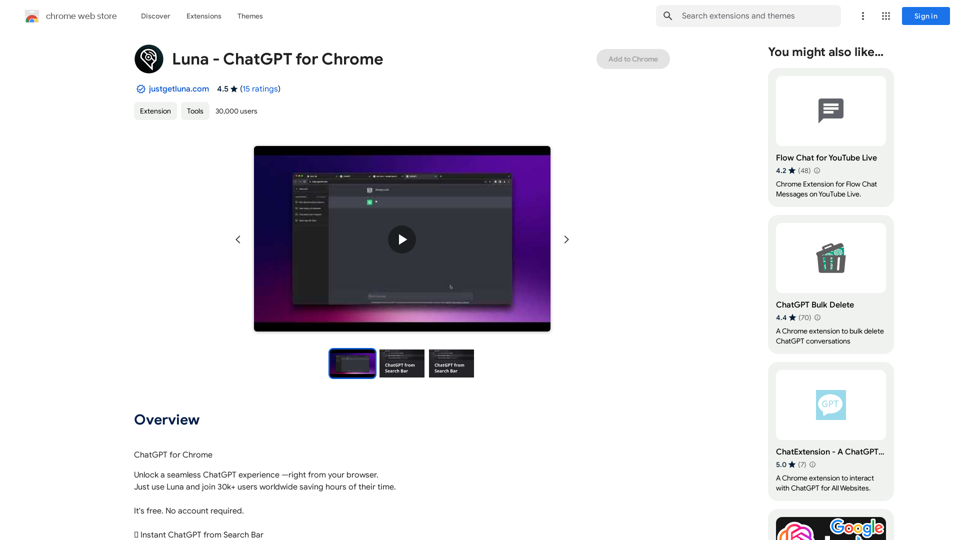
紹介
機能
検索バーからのインスタントChatGPT
Lunaを使用すると、ブラウザの検索バーに「l」に続けてクエリを入力するだけで、ChatGPTにすぐにアクセスできます。この機能により、別のウェブサイトに移動することなく、即座にChatGPTとの会話が可能になります。
どこからでもChatGPTを開くショートカット
ユーザーは、キーボードショートカットを使用して任意の場所から新しいChatGPTタブを開くことができます:
- Windows:CTRL+SHIFT+K
- Mac:CMD+SHIFT+K
コンテキストメニューの魔法
Lunaは、文脈に応じた洞察を得る便利な方法を提供します:
- ウェブページ上のテキストをハイライト
- 選択したテキストを右クリック
- 分析のためにChatGPTに直接送信
無料でアカウント不要の使用
Lunaは完全に無料で使用でき、アカウント作成も必要ありません。すべてのユーザーがアクセスできます。
マルチデバイス互換性
この拡張機能は複数のデバイスで使用できますが、各デバイスに個別にインストールする必要があります。
FAQ
Lunaは無料で使用できますか?
はい、Lunaは無料のChrome拡張機能で、関連するコストはありません。
Lunaを使用するためにアカウントを作成する必要がありますか?
いいえ、Lunaはアカウント作成を必要としません。インストール後すぐに使用を開始できます。
検索バーからのインスタントChatGPT機能はどのように使用しますか?
この機能を使用するには、ブラウザの検索バーに「l」に続けてクエリを入力するだけです。
どこからでもChatGPTを開く機能のキーボードショートカットは何ですか?
ショートカットは以下の通りです:
- Windows:CTRL+SHIFT+K
- Mac:CMD+SHIFT+K
Lunaを複数のデバイスで使用できますか?
はい、Lunaを複数のデバイスで使用できます。ただし、使用したい各デバイスに拡張機能を個別にインストールする必要があります。
最新のトラフィック情報
月間訪問数
193.90 M
直帰率
56.27%
訪問あたりのページ数
2.71
サイト滞在時間(s)
115.91
グローバルランキング
-
国別ランキング
-
最近の訪問数
トラフィック源
- ソーシャルメディア:0.48%
- 有料リファラル:0.55%
- メール:0.15%
- リファラル:12.81%
- 検索エンジン:16.21%
- ダイレクト:69.81%
関連ウェブサイト
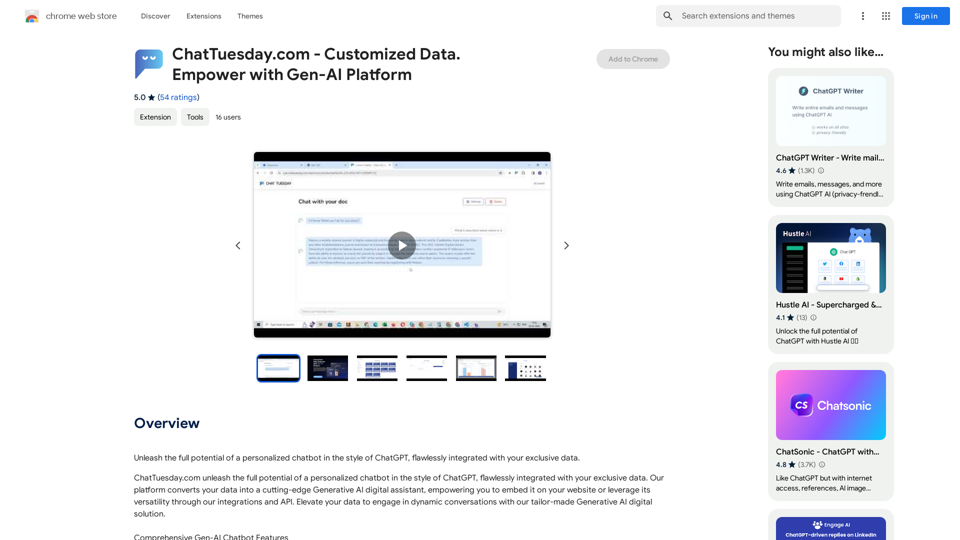
ChatTuesday.com - カスタマイズされたデータ。Gen-AI プラットフォームで力を得よう。
ChatTuesday.com - カスタマイズされたデータ。Gen-AI プラットフォームで力を得よう。ChatGPT のスタイルのパーソナライズされたチャットボットの可能性を最大限に引き出し、独自のデータとシームレスに統合します。
193.90 M

